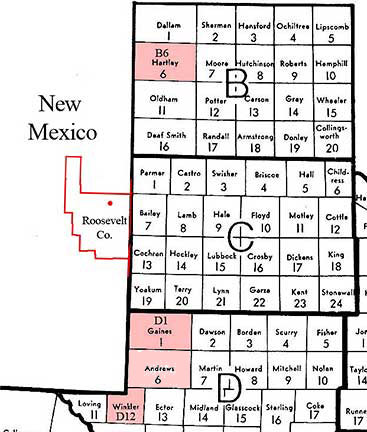
Texas—New Mexico border.
Location of the Roosevelt Co. collections as red dot.

Four Evolvulus collections from sandy areas in the Texas Panhandle – E. New Mexico border (Hartley Co. [B6], Gaines Co. [D1], Andrews Co. [D6] Winkler Co. [D12], Roosevelt Co. in New Mexico show strong similarities yet are strikingly different from other collections from the Trans-Pecos. These appear to represent the same taxon. The original labels would seem to indicate difficulty in identification, as they did not indicate specific taxa. The Gaines and Andrews Co. collections were earlier determined as E. sericeus. Annotations on two sheets point to 'pubescence on both surfaces' (possibly used as a determiner for E. nuttallianus), and eventually all collections in Texas herbaria were placed with E. nuttallianus. In contrast, essentially identical collections of this same form in various New Mexico herbaria from counties near the Texas border have generally been determined as E. sericeus.

The most salient shared features are (1) slender elongated stems with narrow flat leaves, generally erect [-> E. nuttallianus?], generally not falcate [-> E. nuttallianus?], and not crowded [above] [-> E. sericeus?]; and (2) sparse, antrorsely appressed tawny hairs on both leaf surfaces [below] [-> E. sericeus?].
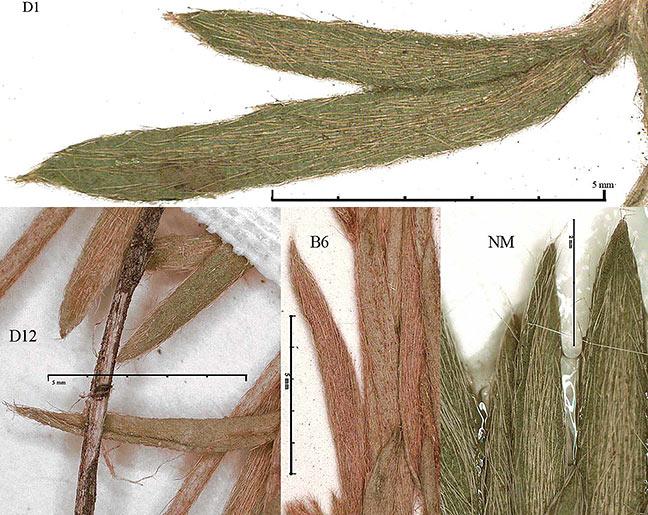

Although notes on the collection sheets indicate that the presence of adaxial pubescence was a major consideration, west of the Pecos River both taxa commonly have adaxial pubescence — noted by van Ooststroom but generally ignored by Texas taxonomists. Pubescence of the upper leaf surface, even as qualified by Shinners in his treatment of Evolvulus in Correll & Johnston 1970 (i.e., vestiture is used to distinguish E. nuttallianus – "deeply pilose on both surfaces with loosely appressed to spreading hairs" — from E. sericeus – "glabrous or loosely pilose above") is not a relevant differentia for these taxa.
One feature supporting the identification of these collections as E. sericeus is the form of the sepal; i.e., sepals of E. nuttallianus are generally linear to narrowly lanceolate (as noted in keys for New Mexico and Arizona, e.g., Martin & Hutchins 1981, Austin 1998, Kearney & Peebles 1951 – and as originally proposed in van Oostroom's 1934 key). The following image shows the sepals of these Texas collections to be ovate-lanceolate, more typical for E. sericeus, and these are the only Evolvulus specimens from these counties. In Roosevelt County, however, both taxa were collected from the same Natural History Preserve of E New Mexico University, shown at the bottom. The E. nuttallianus collection (on the left) has both the typical narrow sepals as well as the expected dense widely spreading hairs.
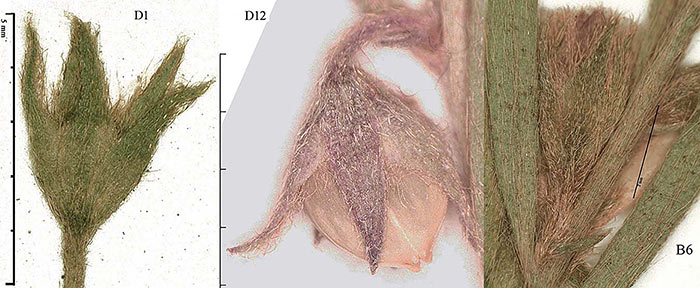
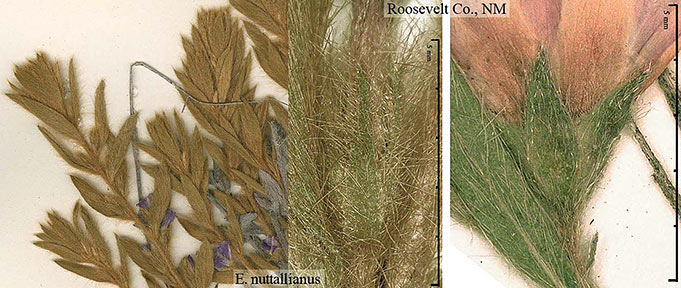
On the other hand, more ovate sepals are found in eastern areas of the E. nuttallinus range, and these four puzzling collections are from sandy areas, an environment in which taxon morphology often deviates from the norm.
My recent leaf clearing study indicates that the venation for this form is pinnate (similar to E. nuttallianus), and lacks the distinctive basal acrodomous pattern of E. sericeus. This was also strongly supported by scans made with light through the leaf.
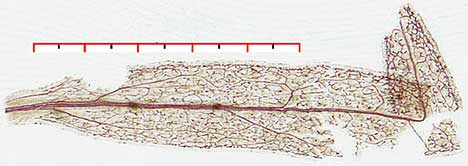
Winkler Co. [D12] |
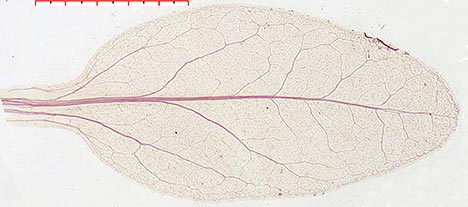
E. nuttallianus — Utah |
|---|

E. sericeus (previously as E. nuttallianus) — Coahuila |

E. sericeus — Hays Co. |
|---|

Winkler Co. [D12] |

E. sericeus — Hays Co. |
|---|